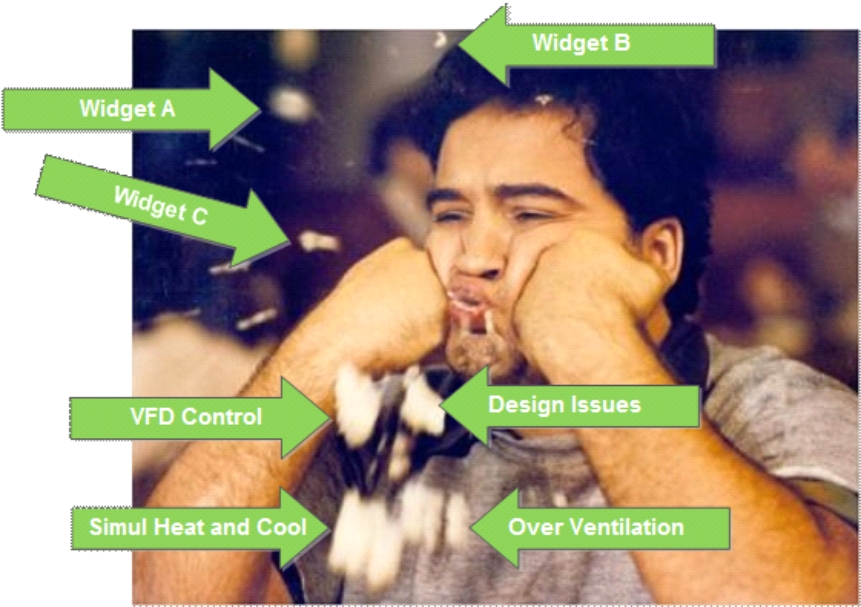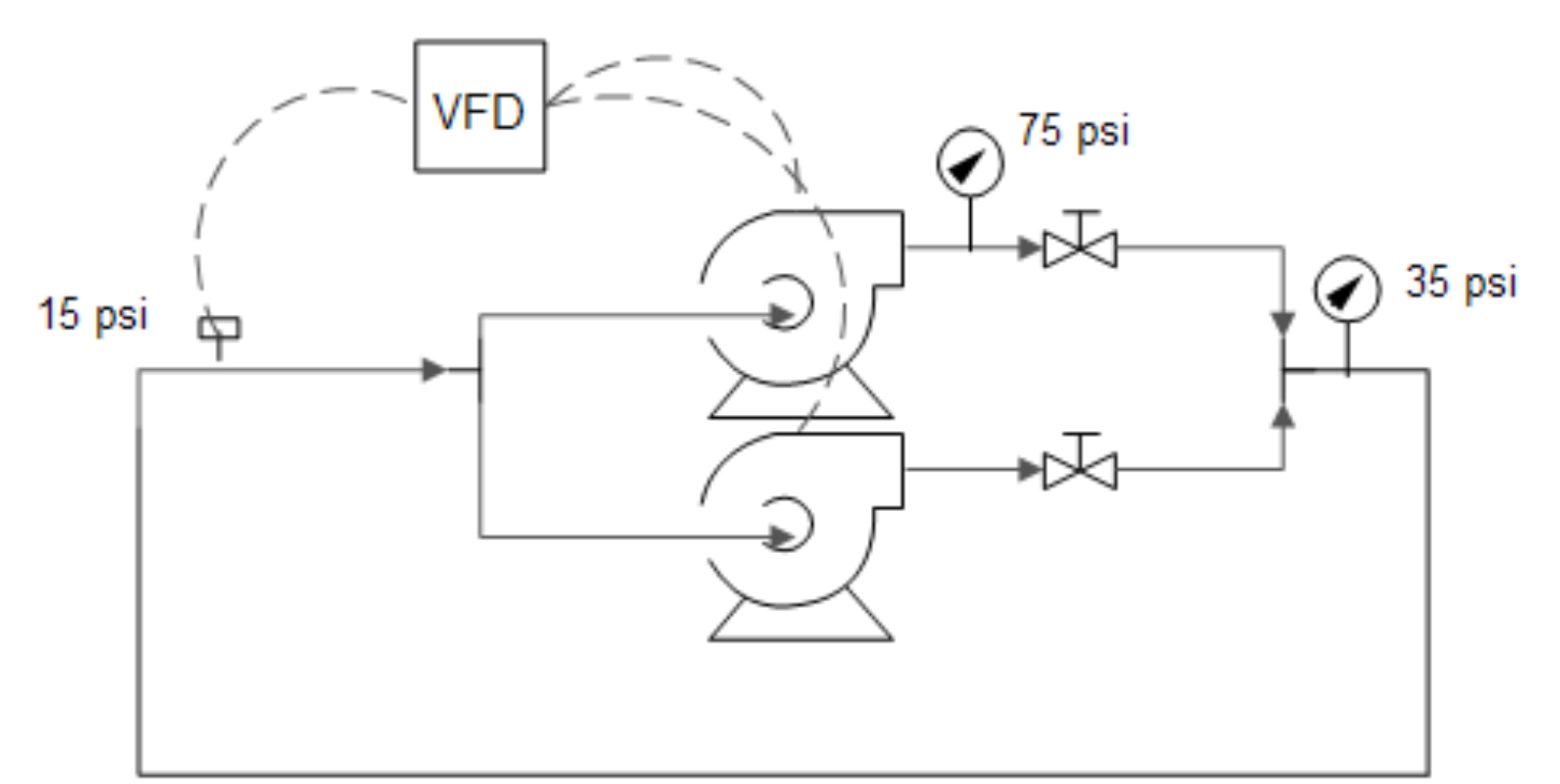
Last week I read AESP Board Chair, Sara Van de Grift’s monthly letter/email to AESPers (if you are not a subscriber, get with it: aesp.org). She describes diminishing opportunities for energy efficiency due to the industry’s addiction to widget-based programs {my phrase), but that there are still opportunities with homes and commercial and industrial facilities operation, and of course a few widgets here and there, like the Nest thermostat. She ends by asking, “Are you up to the challenge” [of hitting savings targets as widgets fade]?

Hell yeah! I’m also thinking that capturing savings isn’t the challenge in my view. The challenge is convincing stakeholders, particularly governors (small g), regulators, and utilities that potential grows and festers in buildings and processes like a giant pus wad. Not pretty? That’s right. All the surface makeup like lighting and solar panels in the world don’t fix these sorts of wastes as John Belushi elegantly demonstrates in the image.
As the woman in the movie Animal House says (in southern accent), “That boy is a P-I-G pig.”
Well, that building is a P-I-G pig.
The big four, as we find them in existing commercial and industrial buildings, are shown as the big globs at the bottom of the picture. Fixing them requires skill, not unlike that of a chiropractor or physical therapist. What are the symptoms? Where does it hurt? Add some testing and measurement – trust me. I know this stuff on both the engineering and physical therapy sides. If the practitioner doesn’t understand the mechanics of the body, or the mechanics of a building, problems aren’t going to be fixed. It is as simple as that.
The other similarity between physical therapy and facility/energy engineering is depth of understanding, including psycho analysis of the patient, or in the case of a building, the patient’s keeper (facility manager). In both circumstances there are textbook cases and solutions that apply to not even half the problems that surface over time; like a zit! For lasting results, one must dig deeper. A good curriculum teaches students how to learn, approach, and solve problems in general. Identifying and fixing specific issues by protocol is for robots. Our industry is legion with robots.
An example? Glad you asked. Allow me to tie one all together.
Last week in an in-house training session, a pumping system was featured as a case study in energy waste. This particular application was for a ground source heat pump system. The pumps in question circulate water through the ground piping loops to extract or reject heat, depending on whether the building is in heating or cooling, respectively.

Our engineer found both pumps pounding away at full speed – you could say producing high pressure like Belushi’s cheeks. The diagram shows an extremely simplified depiction of this first-degree-energy-waste felony.
First, the designer did not specify precisely what pumps to install. Pump models were provided in the specifications, but pumps are like cars in that they come with a four cylinder, six cylinder, or six cylinder supercharged. When specifying a pump, the impeller size must be, uh, specified. It wasn’t. So, the contractor, with his belt and suspenders, takes the largest one available – the V-10 with twin superchargers, so to speak.
Now the pumps are way too big and how does one fix this? Apply the brakes. The balancing valves are clamped down as shown, literally wasting 50% of the pump energy[1] before the water even leaves the equipment room.
What is grotesquely simplified in this cartoon is the straight and short line back to the pump suction. Instead, the path is like driving from Kenosha in SE Wisconsin to Superior in NW Wisconsin, never taking a four-lane highway. After making all those hard right and left turns and flowing through towns (resistance), much of the pumping energy departed to the water being circulated has been burned up in friction losses.
A pressure sensor shown is trying to maintain 15 psi (pounds per square inch) – numbers are made up, but the concept is real as a heart attack. Since the balancing valves burn up half the pressure/energy at the pump discharge, there is not enough oomph remaining to maintain 15 psi. Result: pumps run at full speed for no reason whatsoever other than the slippery winding road where the project goes in the ditch multiple times. This is as common as babies needing diapers.
Other energy waste felons include simultaneous heating and cooling – where I say if it can happen it is, and this includes most buildings – and in general a huge class of measures resulting in equipment running longer and harder due to:
- Belt and suspenders design
- Business as usual installation
- Not understanding root causes of problems
- Fixing misunderstood problems by wasting even more energy
What is the magnitude of this potential waste? Thirty points on ENERGY STAR Portfolio Manager.
Try that with LEDs and power strips.
[1] Throttling from 75 psi to 35 psi – not quite 50% but close enough for horseshoes.





